Interesting Locales: Kusatsu Onsen
One of the places I always recommend people to visit is Kusatsu Onsen located in the Gunma prefecture. Hot springs are an important and popular part of Japanese culture and many foreigners have been exposed to them through anime and there are many places in Tokyo where people can experience hot springs, but sometimes it’s nice to get away from the hustle and bustle of the big city and enjoy the beautiful, quiet, and relaxing countryside of Japan.
Kusatsu is close enough to Tokyo that you can travel there on the cheap but far enough away that you can see a totally different side of Japan, a side that will leave a lasting impression on you. In this article I will explain why you should visit Kusatsu Onsen, and I will be using my own personal experiences to support my claims. Including pictures!! So please enjoy.
Traveling to Kusatsu
Sometimes Japan can be expensive especially when it comes to traveling, though the shinkansen is an extremely convenient and fast way to travel the tickets are often quite expensive. This is the reason than many foreign travellers prefer to use the express bus (or coach if you’re from England like me) it offers an affordable and comfortable way to travel to various places in Japan.

I used the express bus when I travelled to Kusatsu you can catch the bus from Shibuya or Shinjuku station, and it usually costs around 4-5000 yen which is very cheap, but it does take quite a long time to get to Kusatsu. When I travelled to Kusatsu it took me around 5 hours to get there but on the plus side we were able to stop at a shopping centre so we could stretch our legs and buy snacks or use to toilet etc (though there is a toilet located on the bus).
There are other advantages to taking the bus other than the fair price, the bus is extremely comfortable the seats feel great there is also free Wi-Fi so you can bring your Nintendo switch or laptop to kill some time. But for me the biggest benefit of taking the bus was the fact that I was able to see some unbelievable sights it was interesting to see the scenery change from the big city of Tokyo to the smaller town and villages then seeing mountains and jungles as far as the eye could see. I was also able to see some local wildlife I saw wild monkeys in the trees I also saw deer while we were driving.
Yubatake

Kusatsu Onsen is recognised as one of the most famous hot spring resorts in Japan which automatically makes it a must-see location for those who have an interest in Japan and Japanese culture.
Which is why I can’t talk about Kusatsu onsen without mentioning Yubatake as it is the symbol of Kusatsu, and as such it is impossible to miss because it is located directly in the middle of the town. It is an amazing sight and is surrounded by restaurants and souvenir shops which makes it a great place to walk around and explore and because it is in the middle of town it is easy to access from any of the many hotels in Kusatsu.
The best thing about Yubatake is its beauty I enjoy taking picture so yubatake is a great photo location another interesting fact is that the place a different atmosphere depending on if you go there in the day or the night. In the daytime it is beautiful and full of people shopping and visiting the many places available to eat. But when I visited the area, I was surprised for a few different reasons, firstly there were many people walking around wearing yukata I didn’t see this when I visited in the daytime.
Also, at night the place is illuminated with many colourful lights which makes the already beautiful location unforgettable, it’s great for a late-night walk!
Yumomi
While in Kusatsu you can see a unique and beautiful Yumomi show. Yumomi is a style of colling down the hot spring water without diluting it so it can keep its special health benefiting qualities.
This is done using wooden paddles and is performed by women wearing traditional Japanese yukata this performance also includes a traditional song and dance, which is truly spectacular I can’t recommend it enough for people who travel to Kusatsu. There is a limited number of spaces, but the show is held 6 times a day at 09:30, 10:00, 10:30 15:30, 16:00, and 16:30. For adults it costs 600 yen and reservations are not needed
Sainokawara Park

Sainokawara park is one of my highlights in Kusatsu it is a beautiful place that is located about 5 minutes away from the town centre. It is an area that is surrounded by nature and there are many seating areas where people can enjoy the sights and talk.
There are also many natural lakes and streams that have hot spring water the park also contains the largest open-air bath in Kusatsu here you can relax and enjoy the beauty of Kusatsu when I visited the open-air bath the staff were very friendly though they didn’t speak much English there were foreigner friendly options available the assured me that it was ok to visit the bath even if I had tattoos which I know many foreigners have so that was nice to know. The price of the bath was cheap at only 800 yen, since this was my first time using any onsen or bath in Japan the experience was very comfortable.
For those that would like to enjoy the hot spring water without necessarily going in the baths as I stated earlier Sainokawara park has many natural streams and lakes in the area, there are also several footbaths which are free to use and comfortable. I saw many people using the footbaths while talking with friends so this is another option for people who may be a little shy around others
Bonus

I know that Japanese culture is popular in many places in the world and one of the most popular kinds of Japanese culture worldwide is anime and manga. It is because of anime and manga that many people travel to Japan and why many foreign visitors learn Japanese. Kusatsu onsen is a great place to relax there are many restaurants and cafes where people can eat delicious food.
There is a manga café in Kusatsu that was the best manga café I have ever been to. The café is called manga dou and is split between 2 buildings, the first building is a traditional café they serve a variety of foods and beverages including tea and coffee, I recommend the lemon and ginger tea the scones are also delicious.
The second building on the other hand is a full a manga café the buildings are separated because visitors cannot bring food inside the manga café, but it is beautiful the café have a huge variety of manga spanning many different eras and decades. The manga are organised in sections going back as far as the 1970s all the way to many titles that are popular today. There is even a section of books in English I highly recommend for people that love manga.
Conclusion
Kusatsu is a wonderful place where you can enjoy a totally different side of Japan to what many people come to expect or to the images of Japan foreigners are often familiar with. It is close to tokyo and we can travel there for cheap really there is no reason for you not to visit and please use this article as a guide for some of the interesting things you can do when you do visit. Thank you for reading.
Photo Credits:
All additional images taken and provided by the original author, used with permission.
All other content (text) created by the original author and © 2023 MUSUBI by Borderlink
Five years ago, I first came to Japan, and I called the city of Kitakyushu home for two years. It is a city on the northern coast of Kyushu, neighboring Shimonoseki in Honshu. The second heart of the industrial heartland of Japan, with the other being Hiroshima. Kitakyushu was the source of most of Japan’s heavy industrial machines and raw materials.
Though over the years, like in many countries, manufacturing had slowed down, and the city’s population had decreased. This left Kitakyushu in a limbo, with new construction and immigration stagnant, and its old cityscape remaining mostly unchanged. This has left it with a sort of charming “retro” look, one which the city has acknowledged and embraced!
(Tanga market in Kokura, Japan Travel All subsequent Photos are my original work)
Kitakyushu is split into several parts: Kokura, Yahata-nishi, Koura-minami, Moji, Mojiko, and several others. The best places to visit are Kokura and Mojiko, simply because they are the most tourism oriented. Though that’s not to say you can’t find anything to do in the other parts!
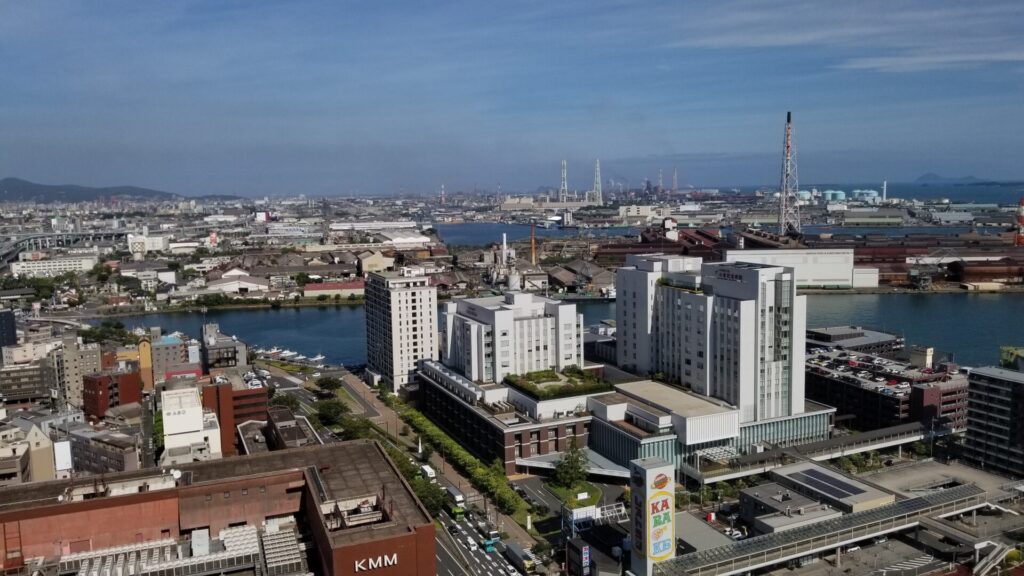
Kokura is the heart of Kitakyushu and used to be its own city in the earlier half of the twentieth century. It is the home of many old factories and ports. Many of which can still be seen from high above, creating patches of bright orange rust. This was where a large amount of Japan’s 19th and 20th century industrialization took place.
So, to honor this fact, many older buildings have been preserved (a rarity in modern Japan!) and example of Meiji-era architecture can still be seen. Most of these classical buildings can be found in Moji and Mojiko and are what we would call “Victorian” style in the west. Mojiko in particular has several examples of this style of architecture, this includes Mojiko station, the former Ministry of railways headquarters, and several manors and older corporate offices which are open to the public. You might even see cosplayers doing a themed photo session!
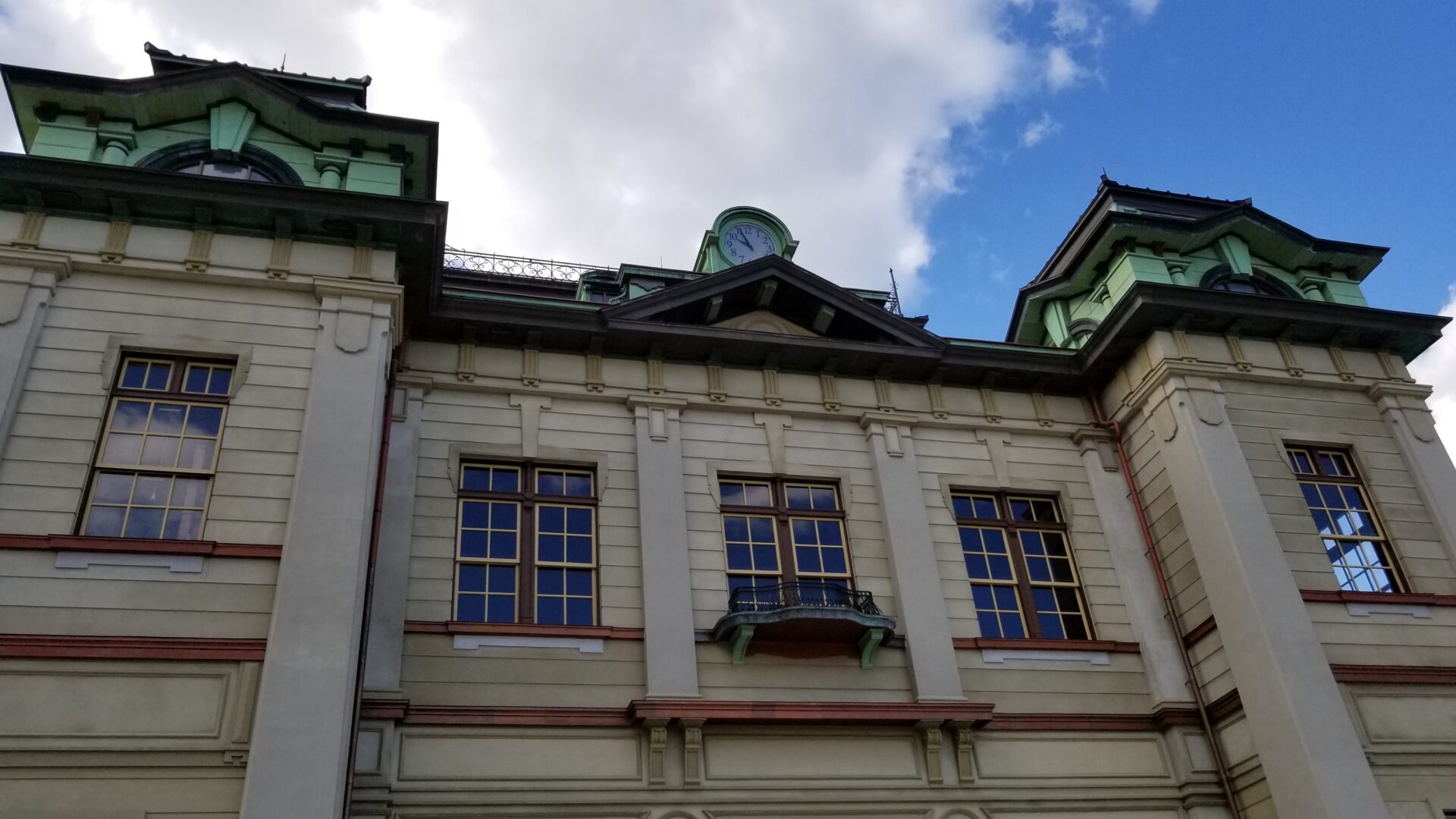
Heading back to Kokura now, we have the rest of our attractions. This includes Kokura Castle, Kitakyushu Natural History Museum, and Aru Aru City!
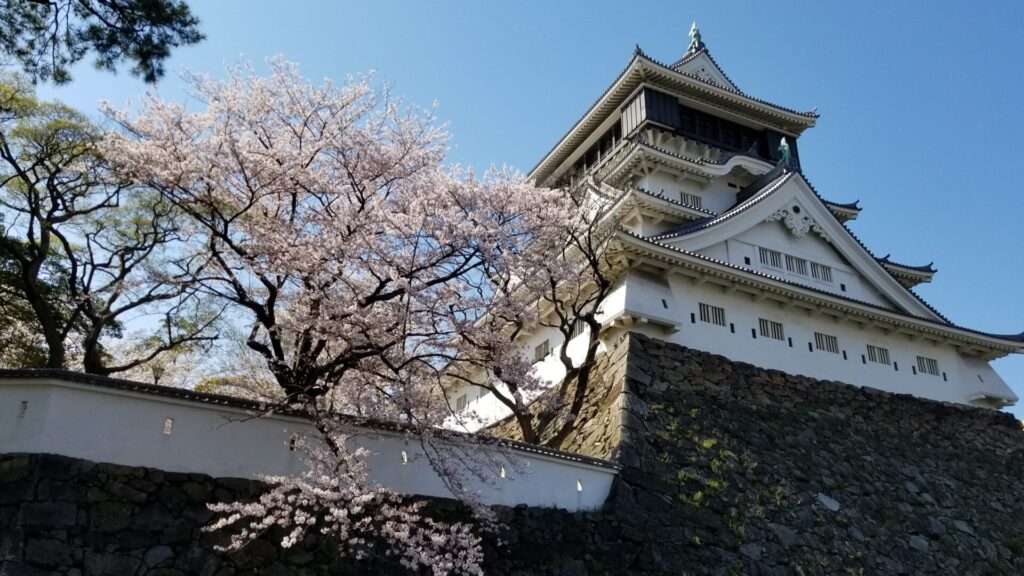
Kokura Castle was built around the 17th century to guard the roads between Kyoto and Hakata, it has been the sight of many residents for centuries only to meet an untimely demise. During the war, the castle had taken a direct hit from a bomb and was completely demolished (you can see a difference in the castle foundation from the original stones). The castle was rebuilt in the 1950s to how the city residents remembered it, and it is now the heart of tourism in the city.
Every summer sees festivals at the castle, with food stands and firework shows every year. Concerts are sometimes held, and the castle and its garden offers a superb cherry blossom viewing in Spring! I strongly recommend you come here for the Springtime, the tree coverage is dense and it makes you feel like you are in a historical movie!
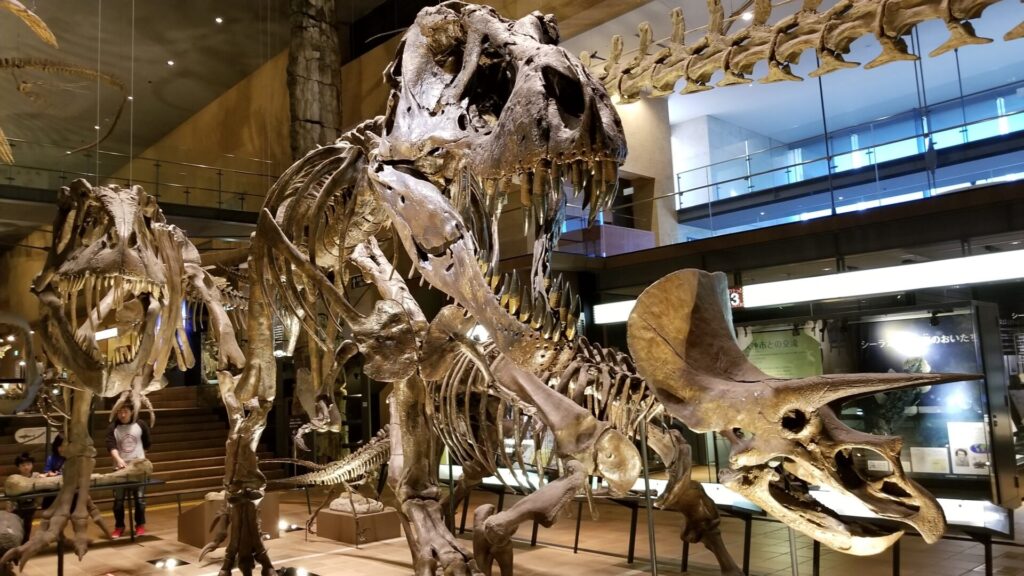
The Kitakyushu Natural History Museum is home to several Dinosaur skeletal casts and samples of Kyushu’s native wildlife! You can even see dinosaurs which lived in Kyushu, such as the predator Kyushuvenator (name pending). The museum is located at Spaceworld station, which is named after the former amusement park which was demolished during my first year in Japan. There are moon rocks from the former park in the museum (donated by NASA!).
Closer to Kokura Castle is the Riverwalk mall and Aru Aru City. Aru Aru City is located just next to Kokura station and is convenient for any otaku traveler to reach. It has a dedicated manga museum with rotating exhibits, and galleries of manga made in foreign countries! There are also many specialty stores for games and manga in the building, and even a cosplay studio! So, if you like collecting manga or vintage video games, I think you’ll be spending quite a lot of money here.
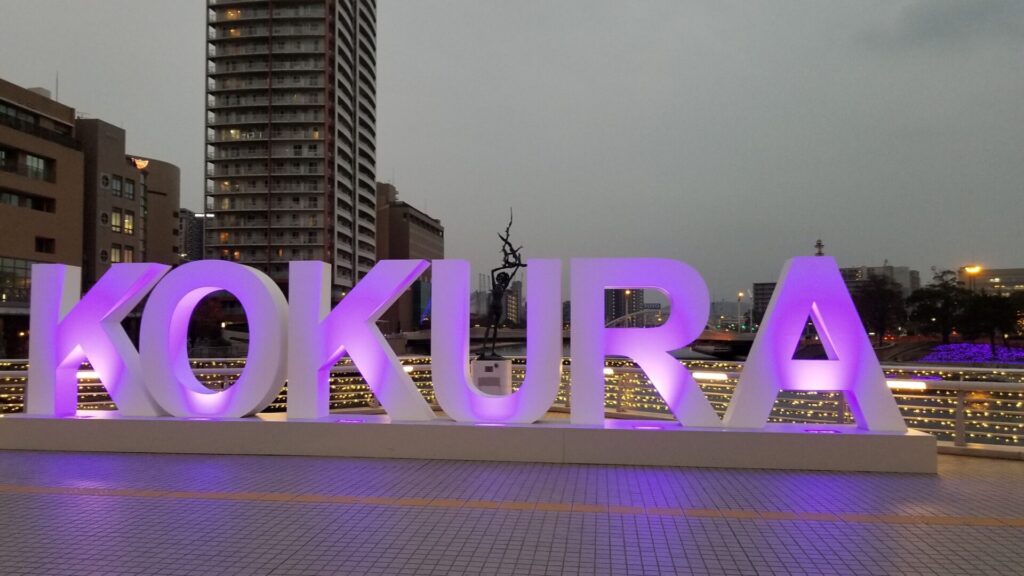
These were the places that I remember the most from my time in Kitakyushu, and I had hoped to share them with you. I really hope they give you as many happy memories as they had for me. Thank you for listening, and please enjoy yourself, never be afraid to experience something new!
Photo Credits:
All additional images taken and provided by the original author, used with permission.
All other content (text) created by the original author and © 2023 MUSUBI by Borderlink
Welcome to Best of MUSUBI, where we revisit articles from the past to breath new life into them with updated information and photos!
It practically goes without saying, but Japanese food is delicious!
Savory steak and seafood, sweet desserts, healthy and flavorful noodle dishes… there’s a lot to love about food in the land of the rising sun. However, if you’re like me and have an addiction to making your food as hot & spicy as possible, Japan can seem a bit lacking. Japanese food is not known for being particularly spicy, and oftentimes the items labeled as “EXTRA-EXTREME MOUTH-DESTROYING MAGMA-LEVEL HOT” are little more than mildly BBQ-flavored. So what to do? Well, there are some options.
Curry Up
First there are the deceptively spicy restaurants. Although Japan is famous for its ramen and sushi, one of (if not the most) popular dishes in the country is actually curry.
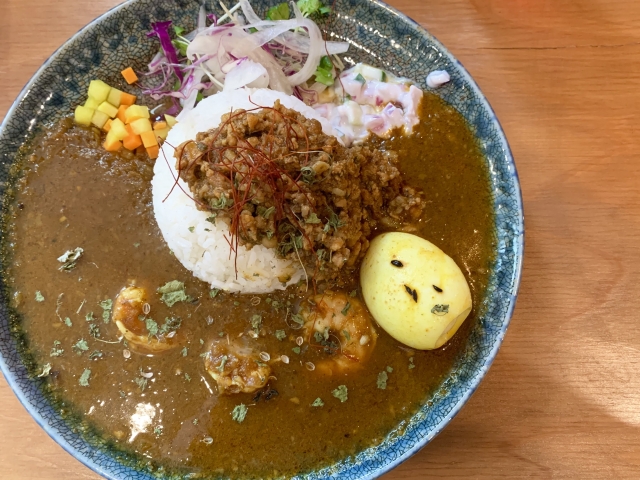
Photo by racchi3
There are plenty of Indian curry restaurants all across the country, and usually asking them to up the heat a bit can get you some great results. But authentically Japanese-style curry tends to be milder on the whole. There are exceptions to the rule though.
One of the national chains of Japanese curry is Coco Ichiban. The food at Coco has plenty of customizable options, including the spiciness level: with 1 being sugary-sweet and 10 being legitimately dangerous. I settle for a 7 at Coco and that is enough to get me sweating and tearing up, so not a bad option for the braver spice-heads out there.
Go International
Secondly, you could try some non-Japanese food from neighboring regions. As you might expect, Chinese and Korean restaurants are also very common and popular in Japan, and there is quite a bit of overlap between the cuisine of Japan and the cuisine of China and Korea.
However, Chinese and Korean food is much more likely to have a kick to it (or at least an option to add a kick). I had never heard of spicy ramen until I found a Korean place in Osaka with “Volcano Ramen,” and I was not disappointed. And of course, you can always rely on good ‘ol Kimchi for some spice.
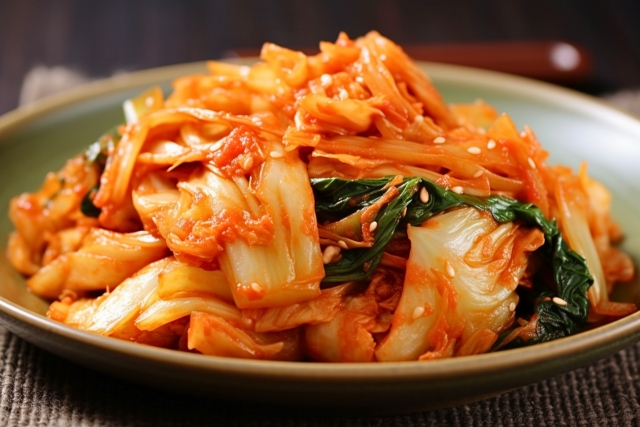
Photo by TY_Photo
We Have Spices At Home
Lastly, of course, there is the supermarket. Tabasco is actually pretty easy to find in Japan at most supermarkets and even at convenience stores. Similarly, there are a number of Thai and Vietnamese style sauces like Sriracha that you can find if you search hard enough.
My personal recommendation is to buy a box of Mabo Dofu mix and throw in a bit of Vietnamese hot sauce. It can give you the spicy satisfaction you need while still being pretty Japanese (ish) and also very cheap.
In conclusion, although Japan is not know for having spicy food traditionally, there are definitely ways to satisfy those urges as long as you know where to look. And, if aren’t bothered by the occasional chorus of “sugoi!” just for putting some Tabasco on your pizza.
Photo Credits:
Additional photos by racchi3 and TY_Photo
All other content (text) created by the original author and © 2023 MUSUBI by Borderlink
Welcome to Ayabe City. This travel guide will provide you with all the information you need for your visit to Ayabe, Kyoto Prefecture. I have spent the past few months exploring the length and breadth of this beautiful town, and I wish to share Ayabe’s delights through the lens of a foreign resident.
Anyone could get a travel guide information off the front desk of the train station, but most of the locations are probably overhyped, carefully marketed and made to look or even sound better than the actual thing. I wish to write on my personal favourites, the places I definitely know will appeal to travels from afar and in Japan. This is the real Ayabe City!
How to Get There
The best time to visit Ayabe City is in the spring and autumn when the weather is nice and the cherry blossoms or colorful leaves are at their best. Transportation services to and from a city is a major influence on visitors. Hence, I wish to share how it works in Ayabe City.
It is easy to get there by train. The closest big airport is Kansai International Airport and it is in the city of Osaka. You can go to Ayabe City by taking a train from the airport. Do not expect to see the typical bustling city train station. Ayabe has a station that is never crowded because of the few train schedules. Bus services are available to designated parts of the city and the taxi services are effective, punctual and reliable.
What to See There
Despite not being inside Ayabe town, it will be a travesty not to mention the nearby beauty called Amanohashidate. Amanohashidate is a pretty strip of sand close to Ayabe City. It is thought to be one of the top three most beautiful places in Japan. People who visit the place can pay to borrow bikes and ride on the sandy land, or they can take a boat tour to see the beautiful sights.
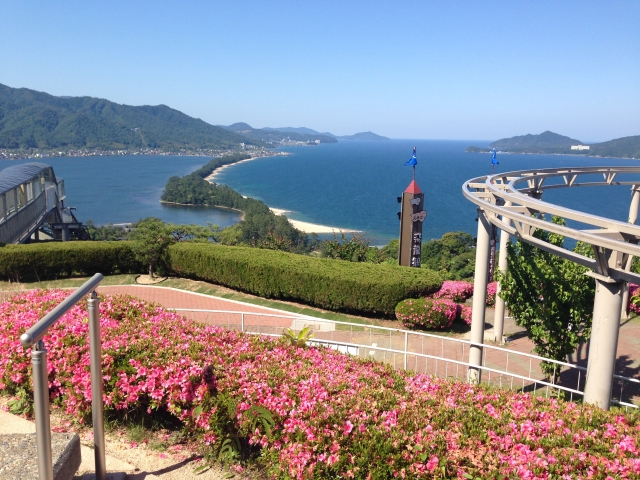
Photo by ktnoontea777
The Chirimen Craft Museum in Ayabe City showcases the silk textile industry for which the city is famous. The Chirimen Craft Museum displays a special kind of silk fabric called chirimen, which is made in a crepe-like style using traditional crafting techniques. People who come to visit can find out about what happened in the past, how things are done, and watch skilled people doing their job.
Ankukoji Temple is somewhere that won’t be talked about much by tour guides but I do have a personal connection and like for this extremely calm temple. The scenery and the ambience of an ancient temple gives it an edge over any other place you could possibly visit in Ayabe city.
Discover the peaceful Ayabe Bamboo Forest, famous for its tall bamboo trees. Go for a stroll on the nice paths and enjoy the peacefulness and prettiness of the forest. The noise made by bamboo leaves moving in the wind makes a calming mood.
Heian no Mori Ayabe is a park with lots of nature and fun things to do outside. It also has really pretty views. Have fun walking or riding a bike on the forest paths, have a meal by the river, or try catching fish in the special spots. Lots of people really like going to the park when the cherry trees are blooming.
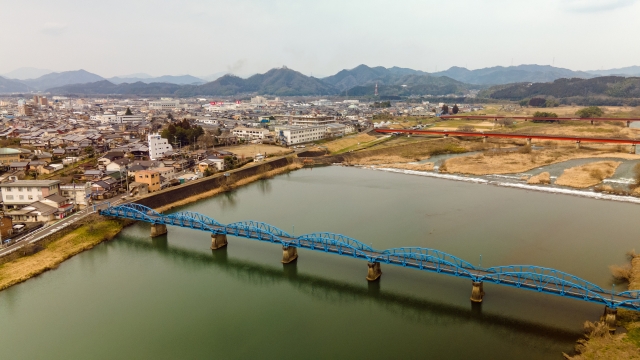
Photo by Seven C メディアラボ
Ayabe Castle Ruins: Ayabe Castle used to be an important castle long ago, especially during the Sengoku period. The castle is no longer there, but the ruins give us a look into the history of the area. Have fun in the nearby park and look at the amazing views of the city from the tall deck.
Come to Ayabe City Museum of Art and History to discover and explore our community’s culture, history, and artwork. The museum displays many different things from the past, like handmade items, old discoveries, and artwork made by people who live nearby.
Ayabe Winery is famous for making really good wines. Come and visit the winery to see how wine is made and try different types of wine. The wine factory also has a place to eat where you can enjoy tasty food with their wines.
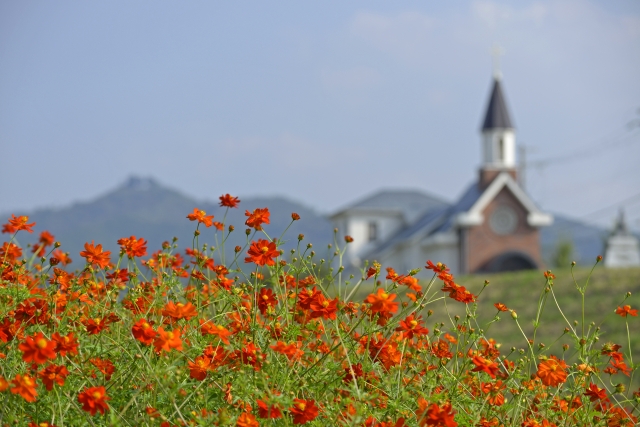
Photo by KKフォト
Make sure to look at the times when the attractions are open and if you need to book in advance before you go. Like Ichinoseki, there is plenty to do in Ayabe, so have a plan before you head out. Have a great time checking out Ayabe City!
Photo Credits
Additional photos by ktnoontea777 , Seven C メディアラボ and KKフォト
All other content (text) created by the original author and © 2023 MUSUBI by Borderlink
Nestled in the heart of the Iwate Prefecture in Japan, the picturesque city of Ichinoseki offers an authentic glimpse into the rich cultural heritage and natural wonders of rural Japan.
While it may not be as widely known as some of Japan’s larger cities, Ichinoseki captivates visitors with its tranquil atmosphere, charming landscapes, and a plethora of fascinating attractions. In this blog post, we invite you to embark on a journey to Ichinoseki and discover the top things to do in this enchanting city.
UNESCO World Heritage Site, Hiraizumi
This area alone is considered by many Japanese travelers is one of the only reasons they visited Iwate, as a UNESCO World Heritage Site, this historic town holds great significance as the center of political and cultural power during the 11th and 12th centuries. Immerse yourself in the awe-inspiring Chuson-ji Temple, a masterpiece of Buddhist architecture.
Marvel at the intricate details of the Konjiki-do Hall, adorned with gold leaf and housing stunning statues. As you wander through the Motsu-ji Temple gardens, the remnants of a once-vast complex, you’ll feel a sense of tranquility and contemplation amidst the lush greenery and beautiful ponds.
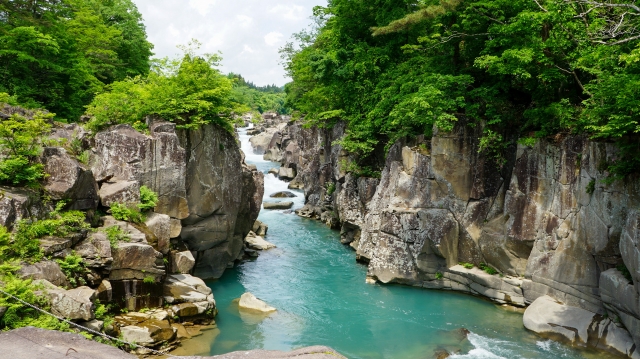
Photo by ミニマルパンダ
Genbikei Gorge
Nature enthusiasts will find solace in the breathtaking beauty of Genbikei Gorge. Located just outside Ichinoseki, this gorge is known for its crystal-clear waters, lush greenery, and towering cliffs. Take a leisurely walk along the riverbank, cross the picturesque stone bridge, and relish the soothing sound of flowing water. Don’t forget to try the unique tradition of “Funa-yurumi,” floating a wooden plate down the river to predict your fortune!
If hiking along the river bank isn’t really your thing, you can also experience the breathtaking beauty of Geibikei Gorge with a serene boat ride. Sit back and relax as a boatman gently guides you along the calm waters, surrounded by towering cliffs covered in lush greenery. Take in the aweinspiring scenery, spot various wildlife, and listen to the boatman’s enchanting songs that echo throughout the gorge. Geibikei Gorge is a truly memorable destination.
Kokuseki-ji Temple
For a truly immersive experience, venture to Kokuseki-ji Temple, a hidden gem tucked away in the mountains. This secluded Zen temple offers a peaceful retreat where visitors can participate in meditation sessions, guided by experienced monks.
Step into the beautifully landscaped gardens, meticulously designed to evoke a sense of harmony and tranquility. Discover the art of tea in a traditional tea ceremony, where every movement and gesture has a profound meaning. Take a moment to reflect, find stillness in the midst of nature, and connect with your inner self in this tranquil oasis.
Local Cuisine
No visit to Ichinoseki is complete without savoring the local cuisine. Indulge in Iwate Prefecture’s culinary delights, such as Wanko Soba, a traditional dish featuring small servings of buckwheat noodles, served one after another. The friendly competition of trying to eat as many bowls as possible adds a unique and enjoyable element to the dining experience.
Another must-try is Jaja-men, a hearty noodle dish with a rich and savory sauce, often topped with minced meat and vegetables. Explore the local markets and restaurants to discover the authentic flavors and warm hospitality that Ichinoseki has to offer, and let your taste buds delight in the regional specialties.
Conclusion
Ichinoseki may be off the beaten path for many travelers, but its wealth of cultural treasures, natural wonders, and warm hospitality make it a captivating destination in rural Japan. From UNESCO World Heritage Sites to tranquil temples, stunning gorges to immersive boat tours, and delectable local cuisine, this charming city has something to offer every visitor. So, pack your bags, escape the hustle and bustle of the city, and let Ichinoseki captivate you with its beauty and tranquility.
Photo credits:
Additional image by ミニマルパンダ
All other content (text) created by the original author and © 2023 MUSUBI by Borderlink
Top photo: 旅するししゃも from PhotoAC
Japan is a country that offers a unique blend of ancient traditions and modern technology, making it a fascinating destination for travelers. From the bustling streets of Tokyo to the serene temples of Kyoto, there is always something new to discover in Japan. In this article, we will explore some of the interesting cultural aspects of Japan and offer useful tips for those new to the country.
Japan has an extensive transportation network that makes it easy to travel around the country. The most popular mode of transportation is the Shinkansen, or bullet train, which can take you from Tokyo to Osaka in just over two hours. The train system in Japan is efficient and punctual, so you can plan your trips with confidence.
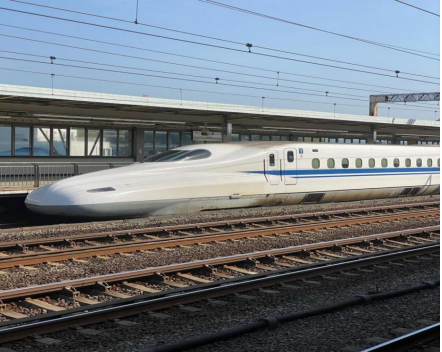
Stock image provided by Funwayo Mhango
If you prefer a slower pace, you can explore Japan by bicycle. Many cities have bike rental services, and there are also dedicated cycling paths in some areas. This is a great way to see the countryside and get a feel for Japan’s slower way of life.
Interesting Cultural Aspects of Japan
Japan has a rich cultural heritage that is evident in everything from its food to its architecture. Here are a few cultural aspects of Japan that you may find interesting:
1. Tea Ceremony – The Tea Ceremony, or Cha-no-yu, is a traditional Japanese ritual that involves the preparation and serving of green tea. It is a highly choreographed ceremony that emphasizes harmony, respect, and tranquility.
2. Kimono – The kimono is a traditional Japanese garment that is still worn for special occasions. It is a long robe with wide sleeves that is tied at the waist with a sash. The designs and patterns on kimonos vary depending on the occasion and the wearer’s age and status.
3. Onsen – Onsen are natural hot springs that are popular in Japan. They are believed to have healing properties and are a great way to relax and unwind after a long day of sightseeing.
Customs
1. Learn a few basic Japanese phrases – Even if you don’t speak Japanese fluently, learning a few basic phrases can go a long way in helping you navigate the country. Phrases like “hello,” “thank you,” and “excuse me” are essential.
2. Carry cash – While credit cards are accepted in many places in Japan, it is still a cash-based society in many ways. Make sure to have enough yen on hand to pay for things like food and transportation.
3. Respect local customs – Japan has many customs and traditions that may be unfamiliar to visitors. For example, it is customary to remove your shoes before entering someone’s home, and it is considered impolite to talk loudly on public transportation.
Cuisine
I am based in Osaka. And Osaka is said to be Japans Kitchen. My stay here so far has been glorious especially with the exposure to the amazing cuisines from Okonomiyaki, Sushis, Ramen, Kushikatsu, Teppanyaki, and my favorite the Takoyaki.
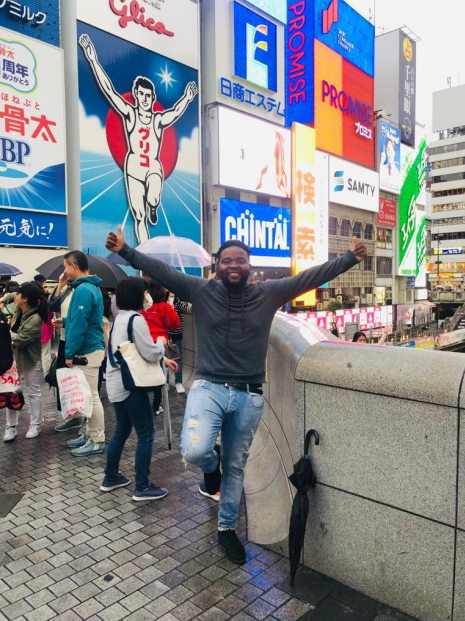
Side Note: The Osaka Glico sign, also known as the “Glico Running Man” or “Glico Man”, is a landmark neon sign located in the Dotonbori area of Osaka, Japan. The sign depicts a stylized athlete crossing a finishing line and holding a baton with the Glico candy logo. The sign has become an iconic symbol of Osaka and is a popular destination for tourists visiting the city. It was first installed in 1935 and has undergone several renovations over the years, with the current version dating back to 1996.
Osaka takoyaki is a popular Japanese snack food that originated in Osaka, Japan. It is a ballshaped snack made of a wheat flour-based batter, filled with diced octopus (tako), pickled ginger, and green onion, and cooked in a special molded pan. The outside of the takoyaki is crispy, while the inside is soft and gooey. Takoyaki is typically served hot, topped with takoyaki sauce, mayonnaise, and dried bonito flakes. It is a popular street food in Japan and can also be found in many Japanese restaurants around the world.
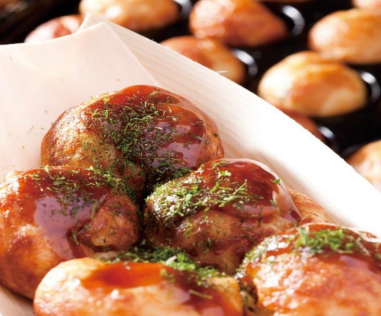
Stock image provided by Funwayo Mhango
Side note, you better start learning how to use Chopsticks if you are like me. Where I come from Malawi, we use our bare hands to eat. Our staple food is nsima which is a dish made out of maize flour usually served with Beef stew, chicken stew with beans and vegetables. So in Japan, they use Chopsticks for most of their cuisines. That is their culture.
Conclusion
Japan is a fascinating country with a rich cultural heritage and a modern outlook. Whether you’re interested in exploring the bustling cities or the serene countryside, there is something for everyone in Japan. By following these tips and respecting local customs, you can have a memorable and enjoyable trip to this unique destination.
Photo credits:
Top photo: 旅するししゃも from PhotoAC
All additional images taken or provided by Funwayo Mhango, used with permission.
All other content (text) created by the original author and © 2023 MUSUBI by Borderlink
Top photo: K-factory on PhotoAC
Tokyo is a well-known cycling friendly city, almost every single person owns a bicycle for easier transportation, this article is about cycling around and cruise around Tokyo.

Tokyo – Mizuno Hiroba Koen. Photo by Ng Tin Yam Terrin
Cycling in Tokyo is a fantastic experience! The city’s vibrant streets and scenic spots become even more accessible and enjoyable on a bicycle.
You can effortlessly weave through the bustling crowds, passing by traditional temples, modern skyscrapers, and serene parks. The dedicated cycling lanes and bike-friendly infrastructure make navigating Tokyo safe and convenient. Feel the energy of the city as you pedal past lively neighborhoods and unique cultural landmarks.

Tokyo – Ginza (Sunday) This photo was taken when the street was sealed for shopping heaven pathway. Photo by Ng Tin Yam Terrin
Not only can you bike around Ginza, but you can also find a lot of indoor bicycle parking lots for people who want to commute by bicycle.

Tokyo – Kameido Clock, Indoor Parking Lot (Free for 3 Hours). Photo by Ng Tin Yam Terrin
If you think biking around Tokyo alone is boring, there are tons of riding groups and events for you to join as well, such as group ride event hosted by Facebook bicycle club (Half-Fast Cycling) or even bicycle clubs created by bicycle shop owners.

Tokyo – Brompton Photo Club by LoroSlowSpot in Ginza Nihonbashi. Photo by Ng Tin Yam Terrin
Cycling around Tokyo Palace is like going on a journey through time and nature. The palace has beautiful gardens and traditional buildings. Riding a bike is easy, and you can see cherry blossom trees in spring.
The area is close to exciting places like Marunouchi and Ginza, where you can shop and have fun. Whether you go alone or with friends, biking around Tokyo Palace is a wonderful experience full of history and beauty.
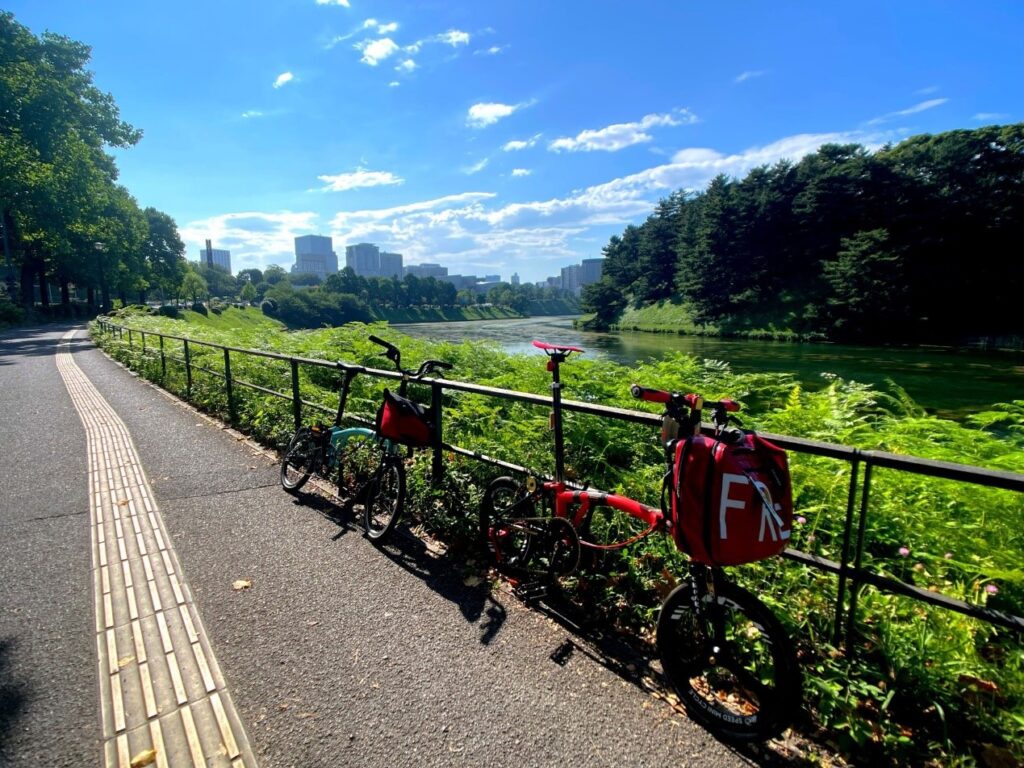
Tokyo – Tokyo Palace Outer Area. Photo by Ng Tin Yam Terrin
In Conclusion, cycling around Tokyo is so much fun! You can explore the historic palace, ride through beautiful gardens, and see famous landmarks, it’s also easy for you to rent a bicycle and feel the excitement of the city around you.
So, go grab a bicycle! Let’s enjoy this city view!

Tokyo – Hibiya Park. Photo by Ng Tin Yam Terrin
Photo Credits:
Top photo: K-factory on PhotoAC
All additional images taken and provided by Ng Tin Yam Terrin, used with permission.
All other content (text) created by the original author and © 2023 MUSUBI by Borderlink
Of the many things one might expect to see in Japan, a giraffe grazing in front of Mount Fuji might not be very high on the list. But indeed, you can see such a sight from the safety and comfort of your own car. Or a rented one. Or a heavily-reinforced tour bus that itself looks like an animal. Because you’re about to step (or well, drive) into the world of the safari park.
Japan has many zoos. And some very good ones, like the Kobe Oji Zoo or the sprawling Ueno Zoo in Tokyo. Animals in them range from the exotic to the mundane. I’ve never seen a white tiger or spotted hyena anywhere else so close befoire. On the other hand, a Squirrel House might seem strange and exciting to some, but to a surburbanite Bostonian, it feels more like a backyard. I’ll never forget seeing a regular old New England seagull along with other aquatic birds at the Kobe Oji Zoo. You’d be forgiven for thinking he had just snuck in there, scouring the premises for any unattended potato chip bags. But no, he was there by design, no doubt benefitting from all the scrumptious morsels that the space gods (or the zookeepers) can provide.
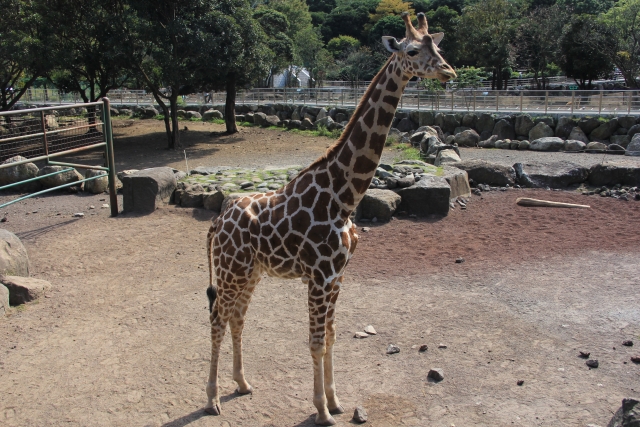
Photo by acworks
But a safari park is something else. More than just a zoo, it’s an experience. And, crucially, it’s a place where the animals roam (mostly) free, and it is us humans that are confined to slow-moving air-conditioned cages. Just as nature intended! Japan has several such parks, but one of the largest and most beloved is Fuji Safari Park.
And why not? A chance to see lions, tigers, bears, giraffes, cheetahs, elephants, rhinoceroses, zebras and bison with Japan’s highest peak filling the sky? There are several ways it can be experienced, though the tour bus is most recommended. You can even have a chance to feed the animals (with park-approved rations of course). If you’re taking your own vehicle (or a rented one) be sure to follow all the rules. Drive slowly and carefully- the last thing you want is hurting the animals. Or having an elephant crush your 2001 Pontiac Aztek with you in it.
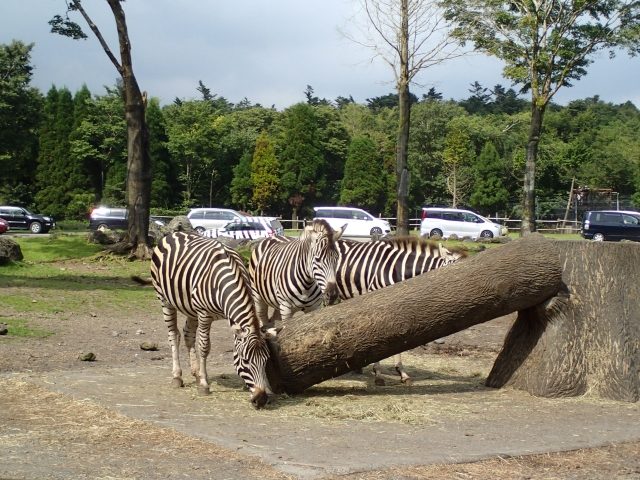
Photo by namako88
And if you need a break from lions, tigers and bears, there are areas with more agreeable members of the animal kingdom. Frolic among the capybara, bunnies or guinea pigs. See the ponies, llamas and goats. Take some time to pet that friendly sheep- any self-respecting zoo has a ふれあいゾーン or petting area. When I finally shuffle off this mortal coil some day, I am definitely reincarnating to come back as a petting zoo alpaca.
The Fuji Safari Park is located on the southern slopes of Mount Fuji and is connected to nearby train stations by bus. The most frequent route connects the park to/from Gotemba Station every two hours. Buses to/from Mishima and Fuji stations exist but are less frequent. Alternatively, a rental car is recommended to simplify access and use of the safari park. Rental outlets are available around most major railway stations in the area, including Mishima and Gotemba stations. Now that all the technical jargon is out of the way, here is a big honking camel crossing the road:
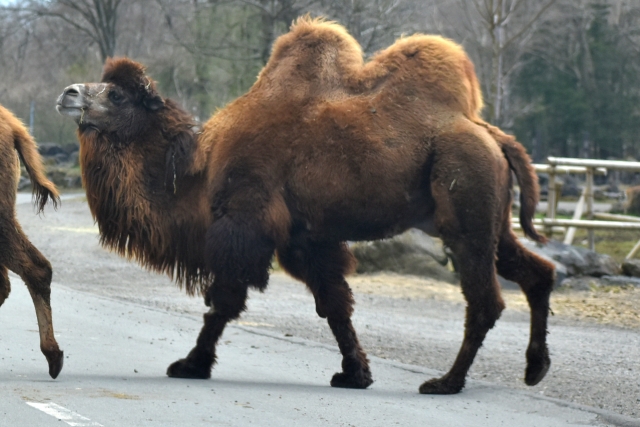
Photo by premium-AC
There are of course other safari parks around Japan. Gunma and Tochigi have great ones as well. Check them out! Check out an alpaca ranch too. Not because it’s a safari park, but because alpacas are cool.
But perhaps you lucky enough to come from a part of the world where animals such as bison, giraffes or gigantic man-eating cats are natives. Well, you too can come to Japan as an ALT some day and see them here. Why? Well, why not?
For those attending the SAGEA Virtual Grad Expo on August 17th, we’ll be there from 10 am to 3 pm SAST. We hope to see you there!
https://sagea.org.za/all-events/virtualgradexpo-2023-3/
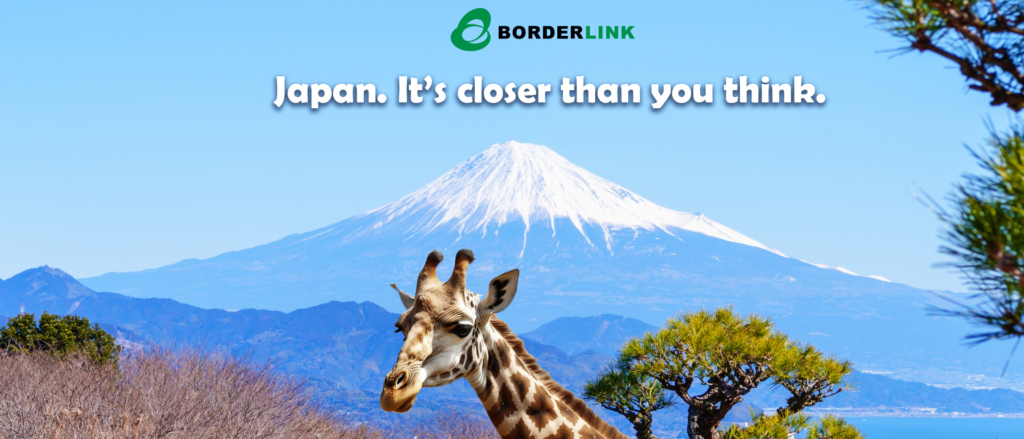
Photo Credits:
Additional images by acworks namako88 and premium-AC
All other content (text) created by the original author and © 2023 MUSUBI by Borderlink
Now that it is summer, we find ourselves with much more time on our hands. Maybe use that time to take a well-deserved rest in the beautiful city of Kyoto. There is no better feeling than finding a cute cafe where you can escape the heat, so coffee lovers, this one is for you.
There are many areas of Kyoto that pride themselves on the plethora of cafes that line their streets, but the best area to explore a less-crowded Kyoto is Karasuma. Whether it is taking yourself out for a date, or bringing along that special someone, this is a cute area of town that never fails to amaze.
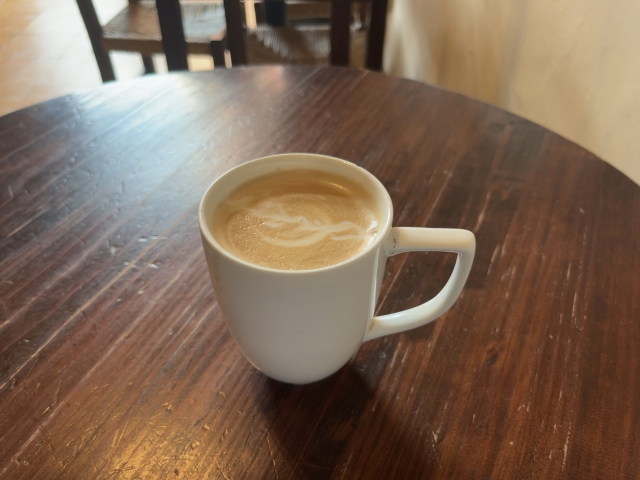
Photo by miiinaamiii
The first cafe that I want to introduce to you is called La Voiture. The atmosphere is designed to look like a French cafe in Paris. There is indoor seating (of course, with air conditioning) that is well known for its tarte tartin.
If you have never had this delicacy, it is a tart made from stewed apples with a light flavor of cinnamon and different spices in a flaky crust. There are other dessert options at the cafe, but you will be missing out if you do not get this one!
You have the option to get the tart made from either tart green apples, or sweet red apples. I opt for having a plate of both served with a light cream to drizzle on top. Check this cafe out and you will not be disappointed.

Photo by くまなな
The next cafe is more of a chain and is well known for being high quality and serving a large customer base. I am of course talking about Blue Bottle Rokkaku. This cafe is set in an old machiya style building and has indoor seating on the second floor. It is tucked away in the corner of a street right beside a bicycle rental store that they have partnered with.
Have coffee with a cute atmosphere. I recommend this cafe to sit and read a delightful book or talk with friends. The staff are friendly and many of them speak English, so you should not have any issues if your Japanese skills are limited. After you finish your coffee, think about renting a bicycle from their partner store and taking a ride alongside the nearby river.
The river nearby is one of my favorite places in Kyoto to escape the heat and relax. There are natural stone steppingstones that you can cross the river or cool down with a relaxing foot bath under the shade of the bridge.
Often, you will be welcomed with the pleasant sound of shamisen players practicing under the bridge. If you thought that Karasuma could not get any better, there are also many cultural buildings and museums that you can explore.
Take a journey to a more local area of Kyoto, escape the crowds, and have delicious, iced coffee from these cute cafes. This area has many more, but these are my go-to’s. Enjoy your summer while exploring the quieter side of Kyoto!
Photo Credits
Additional images by miiinaamiii and くまなな
All other content (text) created by the original author and © 2023 MUSUBI by Borderlink
